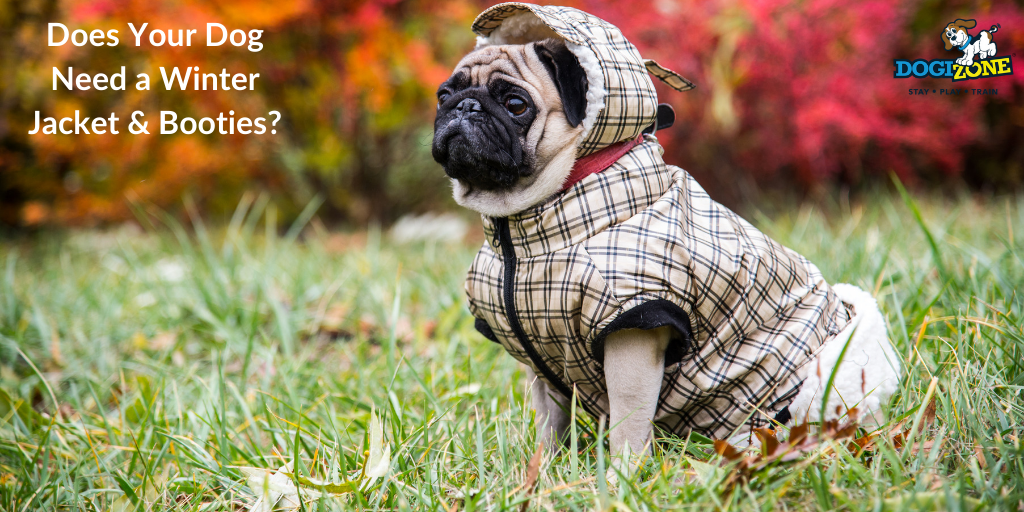Does Your Dog Need A Jacket And Booties For Winter?
With the cold fall and winter months coming soon, you might wondering does your dog need a winter jacket? Dogs today are very different from the wild wolves that are their ancestors. Most companion dogs live indoors, and they rarely spend more than a few hours a day outside, particularly in cold or wet weather or in the heat of the summer sun. 
There are also many different breeds of dogs from small, short-haired toy breeds to large sleek coated breeds like the Great Dane. For these dogs, or for puppies or senior dogs, the cold weather can be a problem, especially when it comes to winter snow and freezing temperatures.
Dog Jackets and Coats
There is a type of jacket, hoodie, sweatshirt, and coat for every size and breed of dog. These are different styles, materials, colors, and patterns in fabric, and some offer warmth, waterproofing, and even reflective patches to help a dog stay visible even when walking in the dark.
Most double-coated dogs, those that have a dense, wooly undercoat and a heavier, thicker outer coat, are well protected from the cold. The dense inner coat traps the warm air, creating additional insulation help keep the body warm. The outer coat helps to shed water and to keep snow from getting to the inner coat and the skin. Examples of these types of dogs include the German Shepherd, Husky, Great Pyrenees, Akita, and the Collie breeds. Labs are also considered double-coated dogs as are Golden Retrievers and Pomeranians.
Single coated dogs that have either short coats or long, silky coats are more likely to need a jacket, coat or sweater in the cold. Examples of these types of breeds include the Pug, Great Dane, Greyhound, the Dalmatian, Boxer, and the Bulldog, to name just a few.
Of course, it is possible to have a double-coated dog wear a coat or jacket, and it does add an extra layer of protection from the cold on long walks and outings.
Coats, jackets or sweaters will take a bit of getting used to for your dog. Make sure they are correctly fitted. They should be snug but not tight, particularly around the legs and the neck. They should not be too loose, or the dog can get his or her feet caught in the fabric, creating a safety risk.
Booties for Dogs
Any breed, size, or type of dog can benefit from booties for winter walks. This is especially the case if you walk your dog on city sidewalks where streets or sidewalks are treated with salt or chemicals for ice removal. The booties protect the pads from exposure to salt or chemicals which can cause tender areas and sores if the foot has a cut or injury.
Booties are also great for walking on snow. The prevent the snow from balling up in the feet, creating painful, icy balls that press on the pads and cause pain and discomfort for the dog.
There are various styles of booties from hard soles to soft soles. Work with your dog and expect the pet to respond unfavorably to wearing the boots for the first few times. Provide short times with the boots on, followed by lots of praise and attention.

